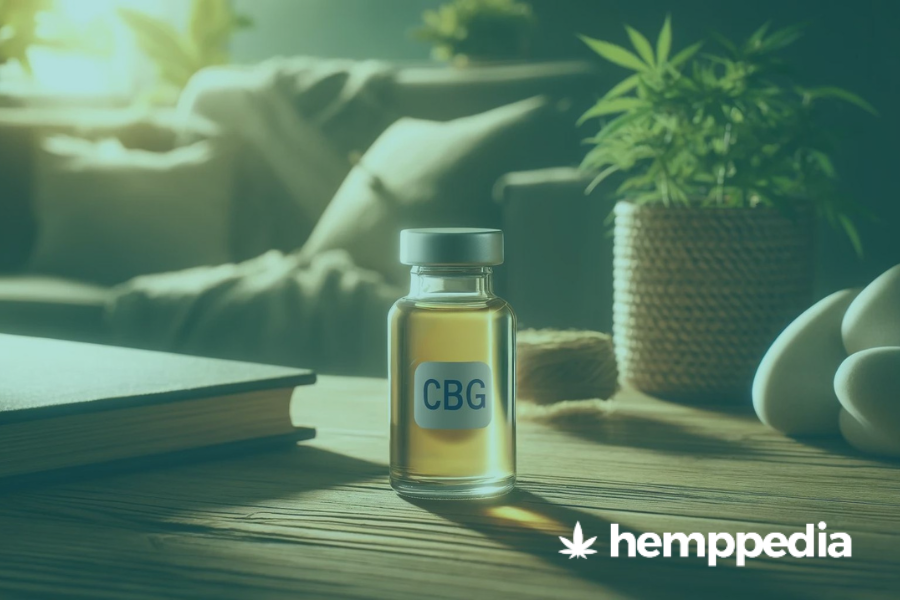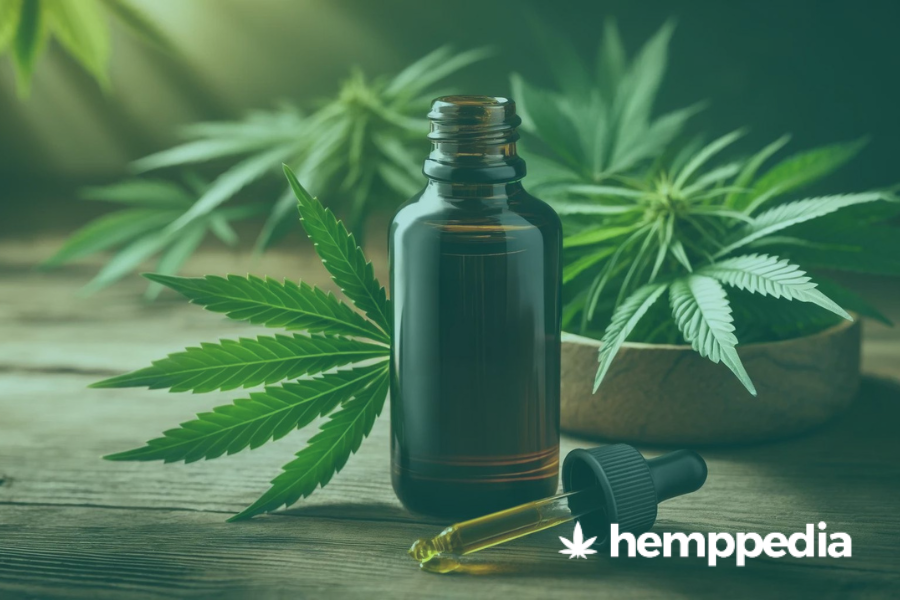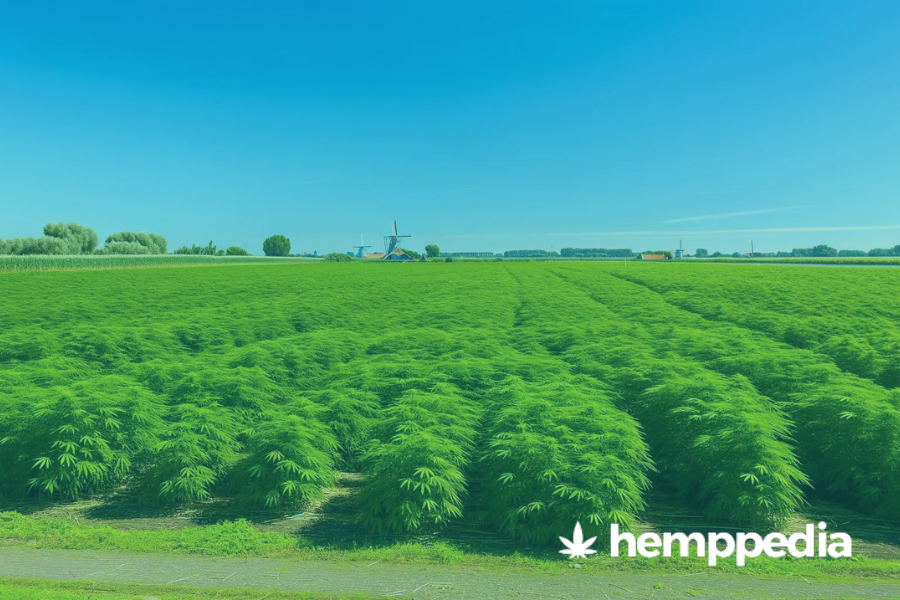Introduction
CBG, the acronym for cannabigerol, comes from cannabigerolic acid (CBGA), a naturally synthesized compound found in cannabis plants. In simple words, CBGa is the mother compound from which all the other cannabinoids originate (THC, CBD, CBN, CBC, CBL).
Although a precursor compound, CBG is found only in smaller quantities (<1%). Hence, several sources label them as rare and group them under minor cannabinoids. Nevertheless, its non-psychotropic nature and therapeutic effects have drawn attention and interest among the scientific community, cannabis companies, biotech companies, and investors alike. Market survey enthusiasts are avidly exploring the demand potential of rare cannabinoids and their impact on the health and wellness market.
In essence, this blog post aims to throw light on this minor cannabinoid CBG to broaden our understanding of its therapeutic properties and potential benefits.
Recommended reading: THC Vs THCA and CBDA Vs CBD.
How is cannabigerol formed and where is it found?
CBGa is the first cannabinoid to be formed in the hemp or cannabis plant.
According to a study1 on cannabis and hemp, in the growing cannabis plants, most of the compounds develop as carboxylic acids such as THCa, CBDa, CBCa, THCVa and CBGa (the acidic form of CBG). That means, in the living plants, THC, CBD, CBG, or other decarboxylated neutrals are not present in large amounts.
So, how are these compounds derived?
After the cannabis plants get harvested, exposure to heat, light, drying, combustion, or aging decarboxylase the acid, resulting in neutral compounds.

Effects of CBG on the endocannabinoid system
Let us quickly recall the function and constituents of the Endocannabinoid system. The ECS is an essential part of the human body responsible for maintaining homeostasis in the body. It controls the various physiological processes, immune system, and neurological system. The constituents of the ECS are endogenous cannabinoids, metabolic enzymes, and the receptors that mediate their actions.
Before we dive into the effects of CBG on the ECS, let us remind ourselves that the biosynthesis pathways of CBG ( as discussed in the above paragraphs) are different from THC and CBD. Hence, we can assume that the pharmacokinetics of CBG should be different. But, currently, studies about the pharmacological properties of minor cannabinoids ( CBG, CBC, CBN) are limited.
Keeping this in mind, let us take a look at available references that report on CBG and its function in the ECS.
A 2018 study2 reports that the structure of the endocannabinoid molecules is different from the structure of natural cannabinoids derived from cannabis Sativa. It points out that although THC, the main psychoactive component of the plant, acts via the cannabinoid receptors, there are arguments whether these receptors mediate the actions of phytocannabinoids such as CBN, CBD, or CBG.
In addition, a 2017 study3 reports that CBG has relatively low efficacy (weak partial agonist effect) at CB1 and CB2 receptors. But it may trigger a range of receptors related to pain, inflammation, and heat sensitization.
For example:
- CBG is a potent TRPM8 antagonist. (TRPM8 receptors found in the prostate, lungs, and bladder) Therefore, there may be a possible application of CBG in treating prostate cancer, bladder pain, or overactive bladder.
- CBG can neutralize the stimulation of serotonin 5 ( found in the central and peripheral nervous system) and CB1 receptors with significant efficiency. Moreover, Gamma-aminobutyric acid (GABA)* reuptake is greater than THC or CBD, suggesting that CBG could possess muscle relaxant properties.
*GABA is an amino acid, the primary neurotransmitter for the central nervous system. (CNS)
- CBG is a strong Anandamide (AEA) uptake inhibitor and powerful agent against MRSA and displays analgesic and antidepressant properties. (Anandamide is a fatty acid neurotransmitter and the first discovered endocannabinoid.)
Have you heard about MRSA ( methicillin-resistant staphylococcus aureus)?
MRSA is a skin infection caused by a type of staph bacteria that becomes resistant to many of the antibiotics used to treat ordinary staph infections.
The Centre for Disease Control and Prevention(CDC) reports that two in every 100 people carry MRSA.
Yet another supporting reference from a recent study4 asserts the promise of CBG’s therapeutic effects as an antibacterial agent. In a mice model, cannabigerol (CBG) a non-psychoactive cannabinoid, proved to be very effective against the MRSA family of bacteria. The research team observed that CBG prevented the drug-resistant bacteria, Staphylococcus aureus from forming communities of microorganisms, where it destroys cells resistant to antibiotics.
CBG directly targeted the cell membrane of the bacteria, preventing its ability to form biofilms. Therefore, cannabinoids promise to provide therapeutic effects as antibiotics are the most important inference from this study.
Potential medical benefits of CBG
Let us begin to compile the potential benefits of CBG, with the key takeaways from the 2018 study5.
- CBG is the non-psychotropic phytocannabinoid,
- It may exert beneficial actions with therapeutic potential via cannabinoid receptors.
As pointed out earlier, research is yet to produce conclusive results on the pharmacokinetics of CBG in the human body. In other words, there are still a lot of unknowns in areas such as how the drug moves, absorption, bioavailability, metabolism, the best route of administration, dosage, form, etc.
But on the positive side, compelling evidence from clinical trials on animal models is promising.
(i) CBG and Inflammatory bowel disease-
A 2013 study6 investigated the effect of CBG in treating colitis in mice. Colitis is an inflammatory condition of the inner lining of the colon. Some of the causes that lead to this condition are inflammatory bowel disease ( IBD) or Crohn’s disease, allergy, and infection. Affected people are bothered with diarrhea, abdominal pain, fatigue, malnutrition, rapid weight loss, and body pain.
The conclusions from the study:
- CBG reduced colon weight/colon length ratio,
- CBG reduced oxide production in macrophages via the CB2 receptor. (Macrophages are specialized cells involved in the detection, phagocytosis, and destruction of bacteria and other harmful organisms.)
- Cannabigerol reduces oxidative stress or reactive oxygen species (ROS) in the intestinal epithelial cells.
- Therefore, CBG could be valuable for clinical experimentation in IBD patients.
- Cannabinoids could help contain the symptoms and inflammation caused by Crohn’s disease, reports a 2004 study7. It adds that endocannabinoids protect the gut by decreasing bowel movement and suppress inflammation.
(ii) Cannabinoids in Glaucoma-
- The blog post-CBD Eye drops cite, researchers from the University of British Columbia who have derived an eye drop loaded with CBGa using nanoparticle technology to penetrate the cannabinoid into the cornea.
- Reference from a cat model 1990 study8 reports that cannabigerol and related cannabinoids may have therapeutic potential for the treatment of glaucoma.
- A textual reference from 20179 points out that topical administration of CBG on cats showed a reduction in Intraocular pressure (IOP) and sustained in chronic use with minimal side effects. Also, a fall in IOP increased further when CBG and THC were administered, with minimal side effects on the central nervous system(CNS).
(iii) Cancer conditions-
- A 2015 study10 points out that while CBD has shown potential in inhibiting the development of many types of cancer including breast, lung, prostate, and colon; other phytocannabinoids that are not as effective as CBD in activating cannabinoid receptors, (CB1 and CB2) could inhibit tumor cell invasion and proliferation of cancer stem cells.
- The 2017 study11 points out that CBG demonstrated simple antifungal effects but showed remarkable anticancer properties in basic research models. It is an effective phytocannabinoid against breast cancer and comparably a potent TRPM8 antagonist for application in prostate cancer.
(iv) Neurodegenerative diseases-
A decline in the functioning and structure of the nerve cells in the brain leads to neurodegenerative diseases. Alzheimer’s, Parkinson’s, Huntington’s disease are some of the conditions associated with disorders related to nerve cells in the brain or peripheral nervous system.
A 2015 study12 reports that CBG showed extremely active neuroprotective properties in mice models. Further experiments showed low levels of improvement in the gene expression of the brain, but animals treated with CBG showed a convincing reduction in the aggregation of mutant huntingtin. However, to confirm the applicability of CBG and other phytocannabinoids in treating neurodegenerative diseases (including Huntington’s disease) needs further research.
(v) The 2017 study11 points out that analgesic and anti-erythemic ( skin drying) effects of CBG surpass those of THC. Moreover, the potential of CBG in dealing with skin conditions shows that it inhibits keratinocyte proliferation and is effective in treating psoriasis. Although, CBG does not display high antifungal effects.
(vi) Appetite stimulant properties:
A 2016 study13 reports that non-intoxicating cannabinoids also could stimulate appetite similar to THC. And CBG shows favorable results in evoking a desire for eating. (hyperphagia) Moreover, the study confirms the therapeutic potential of CBG in treating eating disorders and body weight regulation without any pronounced side effects.
Therefore CBG’s potential to impact Inflammatory bowel diseases (on animal models), Glaucoma, bladder dysfunctions, neuroprotective properties, bacterial infections, cancer conditions, appetite stimulation, are promising.
What is CBG oil?
We discussed above that when the cannabis plant grows, CBG is the first cannabinoid to develop in its acidic form (CBGa). Therefore CBG oil extraction should be skillfully carried out when these cannabinoids begin to form in young plants. So, the window of time to harvest CBGa is small, say roughly at about 6-8 weeks in its growth cycle, where CBG levels could be high. Hence capturing an accurate time to harvest CBG is most important. But the challenge is not all strains contain high CBG concentrations.
What could be the solution to the mass production of cannabigerol?
Genetic engineering, selective breeding, and crop modification (different cannabis and hemp varieties are cross-bred) are adopted to yield high potent CBG. Additionally, cannabis research and biotech companies are also actively engaging in innovating new ways to produce high CBG strains.
In sum, the harvested young plants have to go through a decarboxylation process to break down their acidic form CBGa to its neutral form CBG. Subsequently, CBG oil is extracted through a liquid chromatography process using solvents such as Co2 or ethanol.
Wrap up
- Studies estimate that mental health disorders associated with depression, bipolar disorders, anxiety, stress, eating disorders, schizophrenia affect more than one in ten people globally. Opioids or NSAIDs are no longer supportive to affected populations as they come with lifelong side effects.
- Non-intoxicating, non-psychoactive cannabinoids like CBD and CBG are showing promising potential as a stand-alone or adjunct therapy in handling depression and anxiety.
- The therapeutic potential of CBG in managing symptoms of Glaucoma, neurodegenerative diseases, inflammatory bowel diseases, and cancer are encouraging so far in animal model studies. But results from studies so far are still inconclusive and inadequate. Moreover, there is scope for further qualitative and quantitative research to be conducted.
- Before incorporating any new supplement into your routine, it is advisable to consult with your doctor.
References
- Macherone, Anthony. (2020). Comprehensive analytical testing of cannabis and hemp. 10.1016/bs.coac.2020.05.002. [↩]
- Navarro G, Varani K, Reyes-Resina I, et al. Cannabigerol Action at Cannabinoid CB1 and CB2 Receptors and at CB1-CB2 Heteroreceptor Complexes. Front Pharmacol. 2018;9:632. Published 2018 Jun 21. doi:10.3389/fphar.2018.00632 [↩]
- Russo EB, Marcu J. Cannabis Pharmacology: The Usual Suspects and a Few Promising Leads. Adv Pharmacol. 2017;80:67-134. doi: 10.1016/bs.apha.2017.03.004. Epub 2017 Jun 5. PMID: 28826544 [↩]
- McMaster University. “Researchers uncover hidden antibiotic potential of cannabis: May serve as a lead for new drug development.” ScienceDaily. ScienceDaily, 26 February 2020 [↩]
- Navarro G, Varani K, Reyes-Resina I, et al. Cannabigerol Action at Cannabinoid CB1 and CB2 Receptors and at CB1-CB2 Heteroreceptor Complexes. Front Pharmacol. 2018;9:632. Published 2018 Jun 21. doi:10.3389/fphar.2018.00632 [↩]
- Borrelli F, Fasolino I, Romano B, et al. Beneficial effect of the non-psychotropic plant cannabinoid cannabigerol on experimental inflammatory bowel disease. Biochem Pharmacol. 2013;85(9):1306-1316. doi:10.1016/j.bcp.2013.01.017 [↩]
- Kunos G, Pacher P. Cannabinoids cool the intestine. Nat Med. 2004;10(7):678-679. doi:10.1038/nm0704-678 [↩]
- Colasanti BK. A comparison of the ocular and central effects of delta 9-tetrahydrocannabinol and cannabigerol. J Ocul Pharmacol. 1990;6(4):259-269. doi:10.1089/jop.1990.6.259 [↩]
- A. Aloway, A. Kumar, A.S. Laun, Z.H. Song,Chapter 77 – Cannabinoid Regulation of Intraocular Pressure: Human and Animal Studies, Cellular and Molecular Targets, Editor(s): V.R. Preedy, Handbook of Cannabis and Related Pathologies, Academic Press,2017, Pages 748-759, ISBN 9780128007563 [↩]
- McAllister SD, Soroceanu L, Desprez PY. The Antitumor Activity of Plant-Derived Non-Psychoactive Cannabinoids. J Neuroimmune Pharmacol. 2015;10(2):255-267. doi:10.1007/s11481-015-9608-y [↩]
- Russo, Ethan B., and Jahan Marcu. “Cannabis pharmacology: the usual suspects and a few promising leads.” Advances in pharmacology 80 (2017): 67-134 [↩] [↩]
- Valdeolivas S, Navarrete C, Cantarero I, Bellido ML, Muñoz E, Sagredo O. Neuroprotective properties of cannabigerol in Huntington’s disease: studies in R6/2 mice and 3-nitropropionate-lesioned mice. Neurotherapeutics. 2015;12(1):185-199. doi:10.1007/s13311-014-0304-z [↩]
- Brierley DI, Samuels J, Duncan M, Whalley BJ, Williams CM Cannabigerol is a novel, well-tolerated appetite stimulant in pre-satiated rats. Psychopharmacology (Berl). 2016;233(19-20):3603-3613. doi:10.1007/s00213-016-4397-4 [↩]



